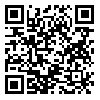Metalwork was considered one of the most prominent arts in the pre-Islamic period. With the influence of Islam in Iran and in accordance with the emphatic instructions of the new religion, the art of metalwork underwent different conditions compared to other arts. Considering the rituals and principles of the Islamic religion regarding simplicity and avoidance of luxury, fundamental changes occurred in the creation of metal works, but at the same time, Iranian Muslim artists remained faithful to their past traditions in making metal objects. One of these collections is the Silver vessels in the National Museum of Iran, a unique treasure of Dailamnian metalwork art, which is said to belong to Amiri Dailami from the 10th century AD and includes 11 pieces of practical vessels for daily use. This research aims to identify the technology of making and decorating this collection of works. Accordingly, the present research aims to investigate the technique of making and decorating this collection of objects. The main question of this research is: What methods (construction and decoration techniques) were used to construct and decorate the Silver Vessels collection? To answer these questions, a historical, descriptive, and analytical method was used. The data collection method is library and field research by visiting the National Museum of Iran and photographing the artifacts. The analysis method is qualitative, considering the research topic. The results of the research show that these artifacts include a collection of Silver functional pottery that was made using the cold hammering method and its decoration techniques include carving and wire burning with written motifs in Arabic and Kufic script.
| Rights and permissions | |
 |
This work is licensed under a Creative Commons Attribution-NonCommercial 4.0 International License. |



